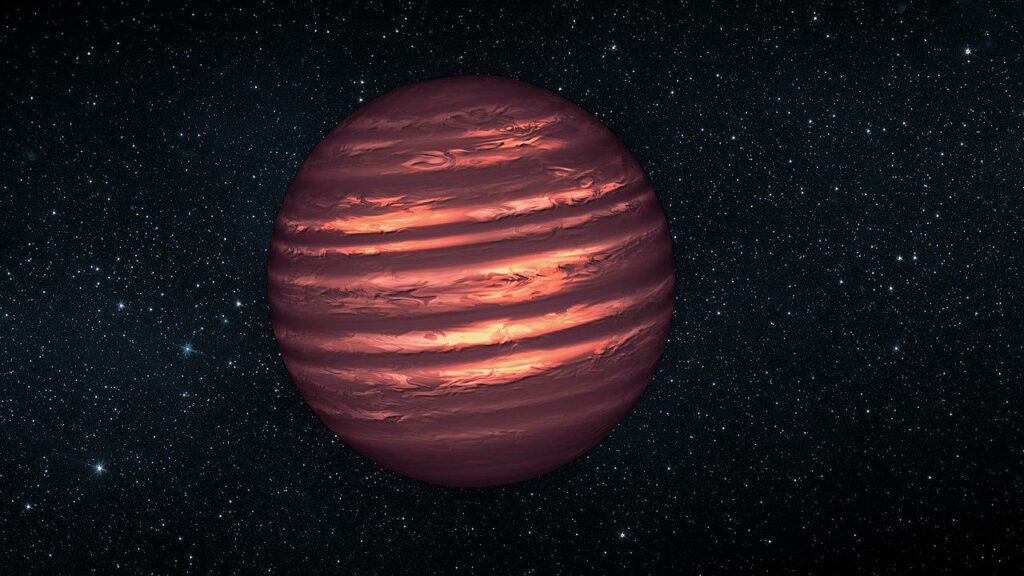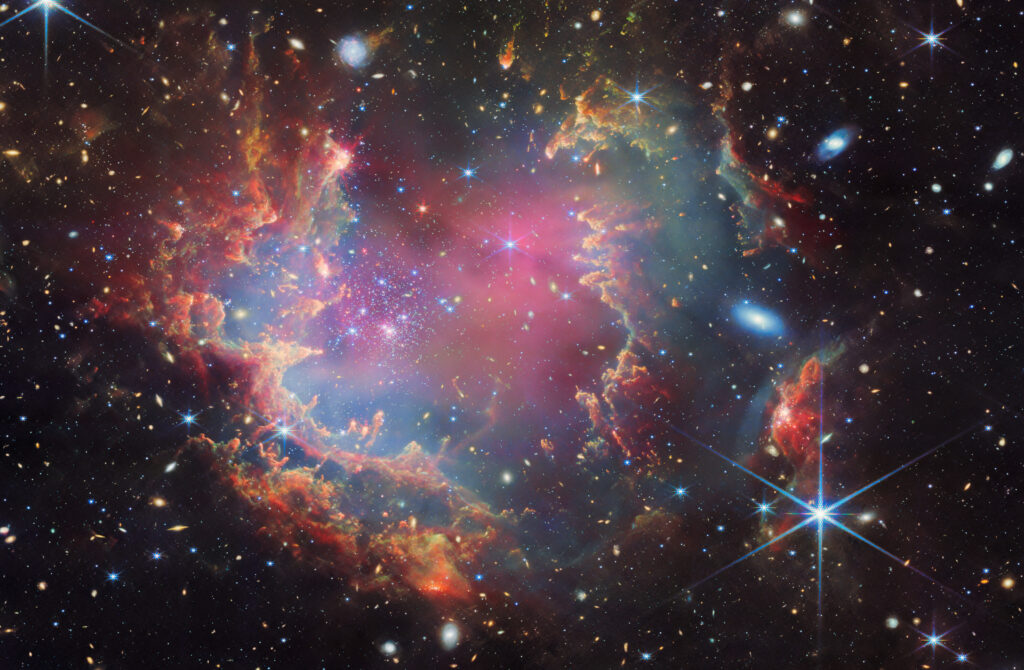An international group of astronomers has announced the discovery of candidates for brown dwarfs that are located outside the Milky Way. The discovery was made using the James Webb Space Telescope (JWST).
Failed stars
To date, scientists know about 3,000 brown dwarfs. They are objects whose mass ranges from 13 to 75 Jupiter masses. Brown dwarfs have intermediate physical characteristics between planets and stars. Some of them have common features with exoplanets, such as the composition of the atmosphere and the nature of storms. They may also have auroras.

At the same time, brown dwarfs can support certain thermonuclear reactions in their interior. But they are quite fleeting and their power is never compared to their own luminosity. Therefore, brown dwarfs do not “light up”, but shrink and fade. Because of this, they are also often called failed stars.
Until recently, all brown dwarfs known to astronomers were in the Milky Way. But now their list has been supplemented by a population of objects found with the help of JWST in the Small Magellanic Cloud, a dwarf galaxy that is a satellite of ours.
Brown dwarfs in the neighboring galaxy
The target of the JWST was the young star cluster NGC 602. Its local environment is a close analogue of the one that existed in the early Universe, with a very low content of elements heavier than hydrogen and helium. The existence of dark clouds of dense dust and the fact that the cluster is rich in ionized gas also indicate the presence of ongoing star formation processes. Together with the related N90 region containing clouds of ionized atomic hydrogen, the cluster provides a valuable opportunity to study star formation scenarios under conditions fundamentally different from the vicinity of the Solar System.

During observations of NGC 602, JWST was able to detect a large group of young brown dwarf candidates. According to astronomers, the results are in very good agreement with the theory that the mass distribution of bodies below the hydrogen burning limit is simply an extension of the stellar distribution. Brown dwarfs seem to form the same way, they just don’t gain enough mass to become a full-fledged star.
In the future, scientists plan to continue studying NGC602. This will help them reveal the secrets of the formation of the first stars and planets in the early Universe.
Earlier we reported on how the Hubble telescope created a portrait of another star cluster from the Small Magellanic Cloud.
Provided by Esawebb


